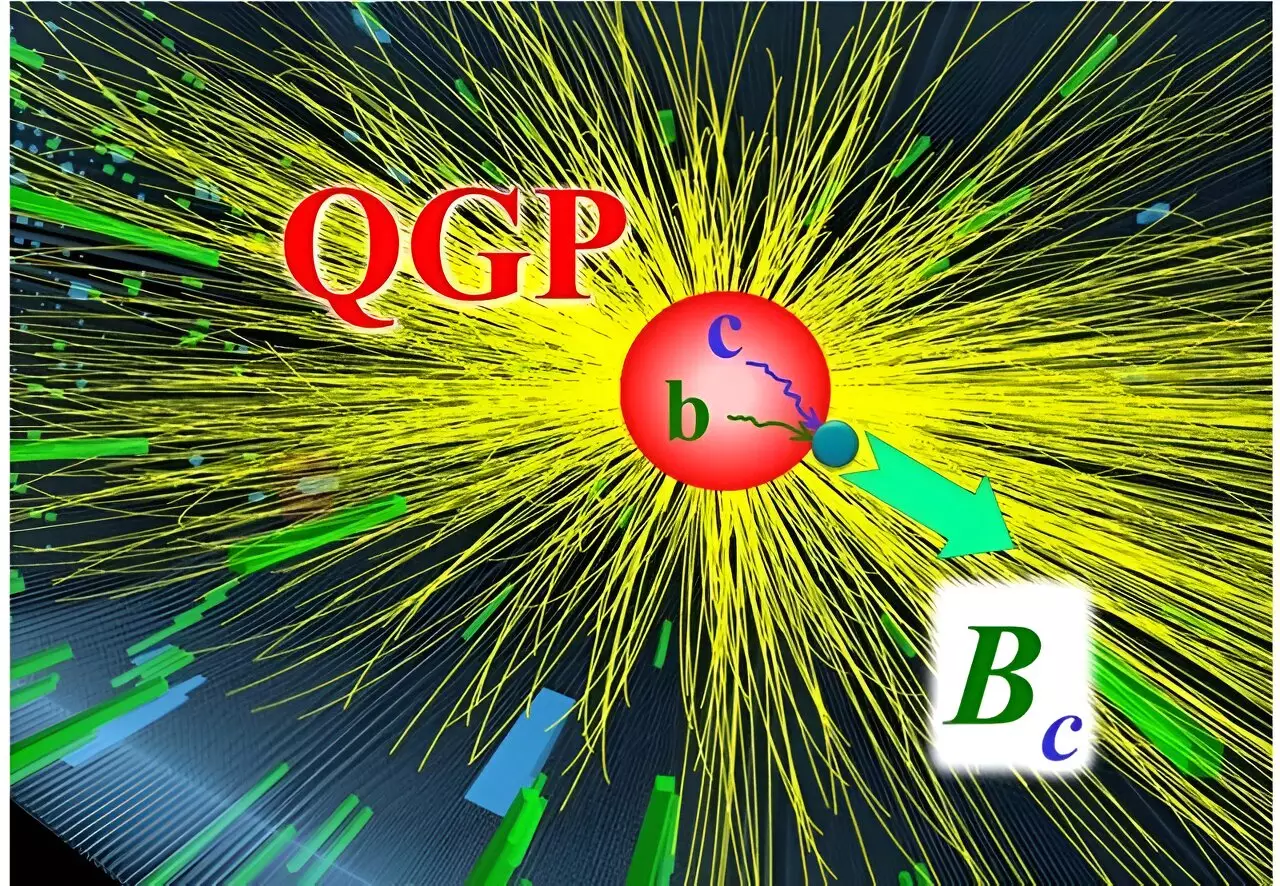Researchers at the HEFTY Topical Collaboration have delved into the realm of charm and bottom quarks recombining to form Bc mesons within the quark-gluon plasma (QGP). This study involved the development of a transport model that simulates the behavior of heavy-quark bound states within the expanding QGP fireball generated during high-energy heavy-ion collisions.
The quark-gluon plasma is a unique state of matter that is formed momentarily during high-energy heavy-ion collisions before transforming into a multitude of detectable particles. Detecting signatures left behind by specific particles is crucial in studying the formation of QGP, as these signatures are distinct from those observed in other collision types, such as proton-proton collisions.
Through theoretical simulations, researchers discovered that the recombination of charm and bottom quarks amplifies the production of Bc mesons. This process is exclusive to high-energy heavy-ion collisions and serves as a clear indicator of QGP formation. By analyzing realistic spectra of charm and bottom quarks diffusing through the QGP, researchers were able to assess the recombination mechanisms and predict a significant increase in Bc meson yield in lead (Pb) nucleus collisions compared to proton collisions.
Theoretical calculations aligned closely with initial observations made by the CMS collaboration at the Large Hadron Collider, validating the study’s findings. However, the current data may not be sensitive enough to detect slow-moving Bc mesons, highlighting the importance of future data collection in reinforcing the validity of the QGP signature identified in this research.
The investigation into charm and bottom quark recombination in Bc meson production sheds light on the complexities of heavy-ion collisions and the transient nature of quark-gluon plasma. By establishing a unique signature specific to QGP formation, researchers have opened up avenues for further exploration and refinement of our understanding of high-energy particle interactions. Future studies will undoubtedly build upon these findings, leading to more comprehensive insights into the behavior of heavy quarks within extreme conditions.


Leave a Reply